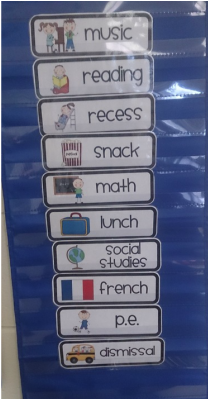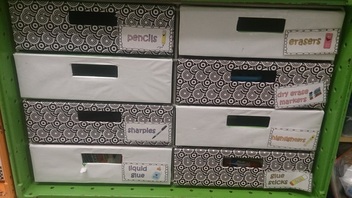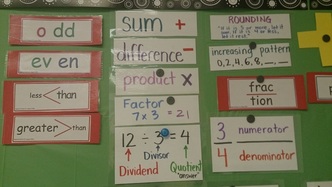This post focuses on the physical setup of the classroom, and how teachers can make small changes in their classrooms to make materials and information more easily accessible to students.
| Visual schedule Visual schedules are often used on an individual basis for students who have Autism Spectrum Disorders or for those who struggle with literacy. I use a visual schedule for my entire class. Pros of the whole-class visual schedule are: - It eliminates the need to make separate schedules for students who need it. This takes up less space on those students' desks and can also be less effort for the teacher. I just use a pocket chart and laminated cards, and change the schedule accordingly each morning. - All students like to know the schedule for the day. Having a daily schedule posted, as opposed to a weekly one, also gives me the ability to easily communicate changes to the usual routine (e.g. if there is a special event or an assembly). - Promotes literacy - Having the pictures accompanied by text can promote literacy for struggling readers. |
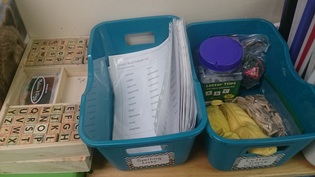
Students participate in an independent spelling program, and choose their own words each week. They can use the word lists (in the bucket on the left) to create their own lists. These lists are in varying levels (from grades 1-6) so students can choose words to study that are appropriate for them.
Students can use the materials pictured to study their words each day. Materials include: stamps, letter tiles, scrabble tiles, Bananagrams, Wikisticks, and dry erase boards (not pictured).
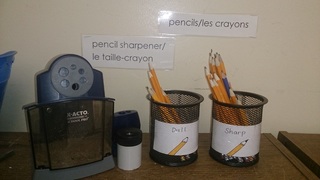
Students follow a rotation of class jobs, one of which is taking care of pencils. The labels on the jars help them keep dull and sharp pencils in their proper places. It also makes it easier for students locate sharp pencils when they need them.
I also teach French, and there are bilingual labels throughout the classroom that help students learn French vocabulary. Although the labels shown are not supported by pictures, most labels are directly on the items they label (e.g. the label for the door is on the door, the label for the window is on the window, etc.).
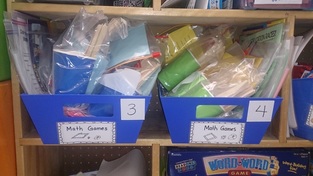
All games are kept on a shelf that can easily be reached by all students. The buckets shown are sorted by grade level (this is a grade 3/4 split class).
Each bucket has bags of games. Each bag has one game, all of the needed materials, and instructions which are supported by visuals.
Not shown: Store-bought Math board games, jar of dice, container full of decks of cards, bucket of flashcards. All of these materials are in buckets which are labeled with text and visuals.
